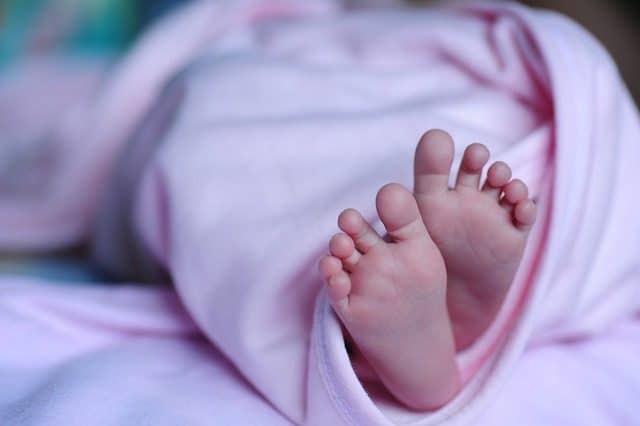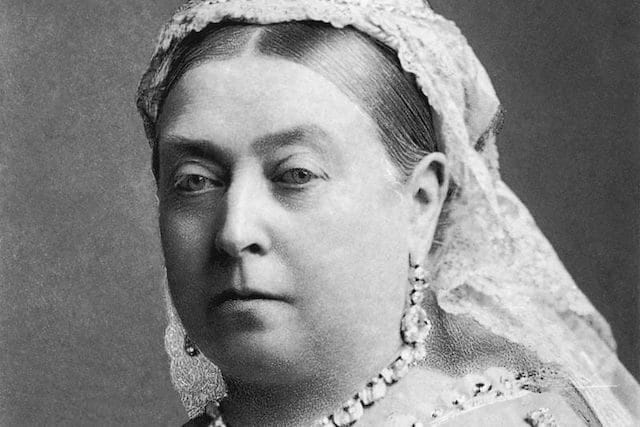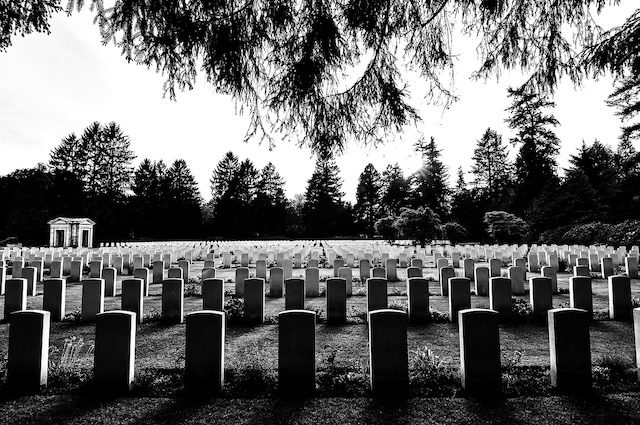The Victorian era was a transformative period in British history. During the reign of Queen Victoria from 1837 to 1901, the empire became the world's largest industrial power. It was a time of unprecedented advances in the arts and sciences, along with social improvements such as the rise of movements suffragettes .
Oddly enough, the Victorian period is also remembered for some of the most bizarre, and sometimes downright creepy, trends ever imagined in human history. While most people have probably heard of the Victorian practice of photographing their dead, that’s just the tip of the iceberg. In fact, compared to some of the entries on this list, it may even be one of the tamer trends of the era.
10. Belladonna eye drops

By the early 19th century, makeup had fallen out of fashion in Western Europe, giving way to a more naked, casual look that is still popular today. Queen Victoria even went so far as to declare it impolite, making it instantly unpopular with her subjects.
To achieve this look, Victorian women often experimented with other alternatives, some of which in a modern context could only be described as “deadly.” From lead and arsenic-based dyes, which can seriously damage the skin, to toxic substances like cinnabar, the medium makeup kit Victorian era could at worst kill you painfully, and at best leave you in debilitating conditions for life. Perhaps the deadliest practice of all was the use of belladonna, one of the most toxic plants known to us, as a eye drops to make the eyes appear larger, causing irreversible blindness or even death when taken directly orally.
9. Creepy Christmas Cards

Christmas cards date back to the Victorian period when In 1843 a man named Sir Henry Cole, inspired by the recently published " "A Christmas Carol" Charles Dickens, ordered the first thousand copies. However, the earliest Christmas cards were expensive to produce, as each one had to be individually designed by a professional colorist using a technique called lithography. It was not until the 1870s that improvements in printing methods and the postal system allowed for mass production and distribution.
In terms of artistic style, it would be decades before the Victorians truly embodied the “Christmas card” aesthetic we recognize today. While many Victorian-era Christmas cards featured everyday designs such as animals and landscapes, there was also a strong demand for morbid and macabre designs.
Insects and lobsters were particularly popular, although there were also many works featuring mythological monsters and ghost children. Historians believe that some of these drawings reflected harsh realities Victorian life, as many poor children froze to death on Christmas Day.
8. Mummy Unboxing Parties

In the early 19th century, Egypt and ancient Egyptian culture experienced a resurgence in popularity in Europe, largely due to invasions Napoleon to England in 1798. However, in Victorian England, the craze took on a much darker tone. They were particularly obsessed with mummies, glorifying them in a way that anyone today would consider unscientific or even a little creepy.
One particularly dark practice was the unwrapping of Egyptian mummies and the display of the process as an art exhibition, usually by wealthy and influential collectors in cities like London. The ceremony involved food and drink — just like any other party you’ve ever been to — followed by the slow and careful unravelling of a long-dead, mummified human body in front of a captive audience, usually a professional surgeon. Depending on the performer, the session might include discussion and commentary on various features of the mummy, such as its condition her skin and hair.
7. Tapeworm diet

While taking tapeworms could theoretically help you lose weight, science has advanced far enough to know that it’s a terrible idea. This was not the case in the Victorian era, when it was considered normal to sacrifice your health and well-being to achieve the nearly impossible beauty standards of the time.
To get that frail, almost dead look popular at the time, many women resorted to the tapeworm diet, which is exactly what it sounds like. It was usually given as a pill with larvae tape worms, which then hatched, entered the digestive system, and hopefully began to absorb some of what the host was eating. Of course, since the tapeworm is also a parasitic worm, things didn't always go as expected, as the diet led to other medical complications, such as diarrhea and vomiting.
6. Dangerous cosmetics

A typical Victorian home's cosmetics box would contain many things that would be considered industrial hazards today, so much so that if you ended up dying from chemical exposure, it would be hard to tell exactly what killed you.
Lead was a particularly popular ingredient, widely used by women in powders and foundations throughout the Victorian era. Paints containing large amounts of lead were used to create a deathly pale appearance, although they also corroded the skin And left other long-term effects on the body. Another favorite was mercury , which was used in products ranging from stain removers to cold creams.
5. Little Farmers

The Victorian period was a particularly difficult time for single mothers. While abortion was illegal and frowned upon, abuse of children by their parents, and the death of a child due to abandonment or neglect carried almost certain death penalties. execution . In addition, single mothers were almost unable to find work due to social stigmatization illegitimate children.
To escape this situation, many women chose to hand over their unwanted children to what was colloquially known as a “baby farmer.” These were other women or agencies that would adopt and raise the children in their care, usually in exchange for a large fee. While this was a noble idea, and many of these agencies did indeed evolve into the earliest forms of adoption agencies, the system was marred by cases of abuse. In extreme cases, such as Margaret Waters and Amelia Dyer, many of the children were killed within days or even hours after adoption. The practice was so widespread that the British government was forced to take such laws , like the Infant Life Protection Act and the Children's Act of 1908, to put an end to it.
4. Bathing machines

Bathing machines were portable changing rooms for women, mostly used at the beach and other public bathing areas. Despite their rather progressive ideas in other areas, such as makeup, the Victorians were still rather prudish about women having a good time outdoors. To prevent this from happening, Victorian England introduced strict segregation laws in 1832, requiring men and women to stay at least 60 feet apart on the beach.
Of course, this wasn't enough, as it still allowed women to have a good time in public, albeit a little further away from the men. The bathing machine was the perfect solution. It was basically a big box on wheels carts , which could be pulled into the water by horses or by hand, with sections for wet clothes and ladders to keep it all above water. The swimmer would enter on one side, change into his bathing suit, and exit on the other. More complex designs, like the one used by Queen Victoria , accompanied by draperies and other improvements for greater privacy.
3. Green Scheele

IN In 1775 Swedish scientist by name Carl Wilhelm Scheele came up with his own blend of green dye. Now known as Scheele's green, it was made from copper arsenite and was a significant improvement over other greens available on the market. For example, it looked like a naturally occurring green, compared to the gray or brown hues found in most of its alternatives. It was also, as we now know, quite poisonous, and anyone exposed to it would develop some long-term health problems. In more extreme cases, it could even lead to death.
Despite this, Scheele's green — and an improved version called Paris green — became extremely popular during the Victorian era, used in everything from wallpaper to carpets and even children's toys. It would be appropriate to depict this time period in a green hue, even if most people were well aware of the detrimental effects of arsenic exposure. According to one rumor, Napoleon Bonaparte may have died from too much Scheele's green present on his island estate Saint Helena .
2. Human hair jewelry

You might think that arsenic and lead were the strangest ingredients to be found in a typical Victorian home, but you'd be wrong. There was also human hair, usually taken from a deceased loved one, and turned into decorations , such as wreaths, necklaces, bracelets and anything else that can be made from hair.
It was an entire art form of the era, and more elaborate pieces required a lot of time and effort. It was not uncommon to use hair from more than one deceased relative, or even a pet, if that helped the look. In the 20th century, this practice died out as more and more people realized that it was quite creepy. However, it is still possible to find museums and private societies dedicated to preserving crafts.
1. Resurrectionists

While medicine and surgery reached new heights during the Victorian period, doctors, surgeons and other medical experts were always short of subjects for experimentation. Because at that time death penalty was rapidly going out of fashion, and there was suddenly an acute shortage of corpses for scientific experiments.
These conditions gave birth to an entirely new class of criminals - resurrectors , a euphemistic term for grave robbers and organ traffickers who regularly supplied hospitals with fresh corpses and corpse parts to work with. Although the practice was illegal, apparently the high fees offered by practitioners, coupled with the country's high unemployment rate, made it a lucrative and widespread occupation. It was so bad that at its height, people had to guard the graves of their loved ones to prevent them from being robbed.














Оставить Комментарий